In Software Development
Pagoda for Golang isn't always a framework however as a substitute a base starter-package for rapid, clean complete-stack net improvement in Go

Management

Pagoda is aiming to offer tons of the capability you'll anticipate from a whole net framework in addition to organising styles, techniques and shape on your net utility.
Pagoda - A simple template manager for Golang
Built on a strong basis of well-installed frameworks and modules, Pagoda targets to be a place to begin for any net utility with the gain over a mega-framework in which you have complete manage over all the code, the cappotential to without problems switch any frameworks or modules in or out, no strict styles or interfaces to follow, and no worry of lock-in.
While separate JavaScript frontends have surged in popularity, many pick the reliability, simplicity and pace of a complete-stack technique with server-aspect rendered HTML. Even the famous JS frameworks all have SSR options. This assignment targets to focus on that Go templates may be effective and clean to paintings with, and thrilling frontend libraries can offer the equal contemporary-day capability and conduct while not having to put in writing any JS at all.
Basics
While many splendid initiatives had been used to construct this, all of which can be indexed withinside the credit section, the subsequent offer the inspiration of the again and frontend. It's crucial to be aware which you aren't required to apply any of these. Swapping any of them out might be quite clean.
Backend
- Echo: High performance, extensible, minimalist Go net framework.
- Ent: Simple, but effective ORM for modeling and querying statistics.
Frontend
Go server-aspect rendered HTML blended with the initiatives beneath allow you to create slick, contemporary-day UIs with out writing any JavaScript or CSS.
- HTMX: Access AJAX, CSS Transitions, WebSockets and Server Sent Events at once in HTML, the use of attributes, so that you can construct contemporary-day person interfaces with the simplicity and strength of hypertext.
- Alpine.js: Rugged, minimum device for composing conduct at once to your markup. Think of it like jQuery for the contemporary-day net. Plop in a script tag and get going.
- Bulma: Provides ready-to-use frontend additives that you may without problems integrate to construct responsive net interfaces. No JavaScript dependencies.
Storage
- PostgreSQL: The world's maximum superior open source relational database.
- Redis: In-reminiscence statistics shape store, used as a database, cache, and message broker.

Why and how to use Golang?
Hardware limitations
The first Pentium 4 processor, clocked at 3.0 GHz, was introduced back in 2004 by Intel Corporation. Today, the Mackbook Pro 2016 is clocked at 2.9 GHz. So, in almost one decade, the capacities haven't changed too much. You can see a power comparison at different stages in the chart below.
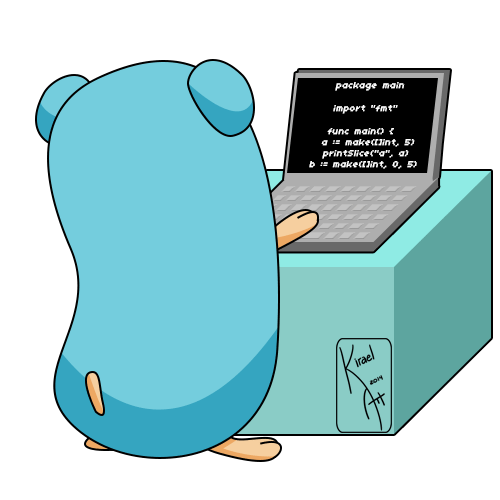
You can see from the above chart that thread performance and CPU frequency have remained stable for almost a decade. If you think that adding more transistors will prove to be a good solution, you're wrong. This is because some quantum properties (e.g. tunneling) and related problems will start to emerge.
To solve this problem:
- Manufacturers have started adding more and more cores to processors. We now have quad-core and octa-core processors.
- They have also introduced hyper-threading.
- More cache has been added to increase performance.
- But the aforementioned solutions have disadvantages too. We can't add an unlimited amount of cache memory to the processor because it has physical limitations: the bigger the cache, the slower it gets. And adding more cores to the processor would incur additional costs.
All this has its limits. For instance, multi-core processors can run multiple threads simultaneously and this leads to image parallelism.
And if you can't rely on hardware enhancements, the only solution is to use more efficient software to improve performance. But modern programming languages have little effect in this regard.
"Modern processors are like nitro-charged funny cars. Unfortunately, programming languages today resemble Monte Carlo: they are full of twists and turns." © D. Ungar
We have the Go language and goroutine!
More cores are expected in the future. Moreover, today's applications use multiple microservices to support database connections, MQ (Messages queues) and cache storage. The software and programming languages we develop need to support concurrency and be extensible as the number of cores keeps increasing.
Most modern programming languages (such as Java, Python etc.) support multithreading. But the real problem is related to concurrent execution, thread locking, race condition and interlocking. This makes it difficult to develop a multi-threaded application.
Take Java for example. Each channel consumes about 1 MB of memory, and, eventually, if you run thousands of threads, you may end up running out of memory. In addition, communication between two or more threads is also a challenge.
The Go language (aka Golang) was born in 2009, when there were already multi-core processors. That's why this language is built with parallelism in mind. Go has goroutine instead of threads. They consume only 2Kb of memory. So you can activate millions of goroutines at any time.
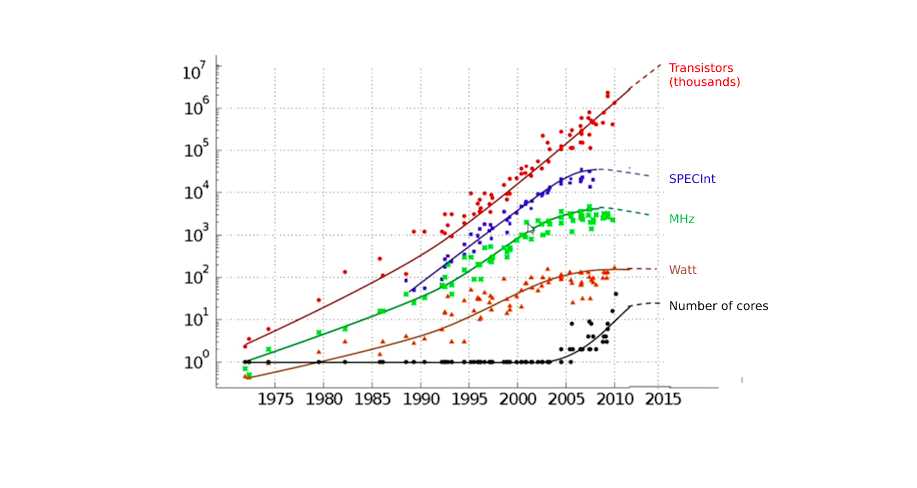
Other advantages:
- Goroutines have segmented expandable stacks. In other words, they only use more memory when needed.
- They also run faster than threads.
- Goroutines go together with embedded primitives to exchange data safely.
- With data structures in use at the same time, you don't have to resort to mutex locking.
- 1 goroutine can work freely on multiple threads. Horoutines are multiplexed into a small number of OS threads.
- Here is one of Rob Pike's talks, which exposes the issues of multitasking and concurrency.
All of the above points make Go a powerful tool in handling concurrency, like the C languages and Java, but with the naturalness and beauty of code as in Erlang.
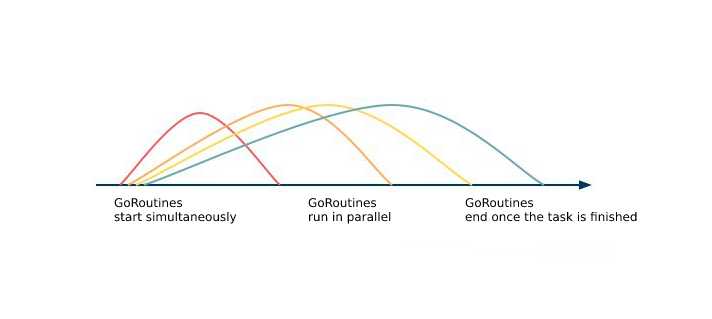
Go runs on basic hardware
One of the most significant advantages of C and C++ over other modern languages such as Java/Python is their performance. This is because C and C++ are compiled instead of interpreted.
Processors read the binary code. When creating a program in Java or other JVM-based languages, the project is compiled from human-readable code into byte code for the VM on top of the underlying OS. At runtime, the VM interprets this byte code and converts it to binary code that processors can understand.
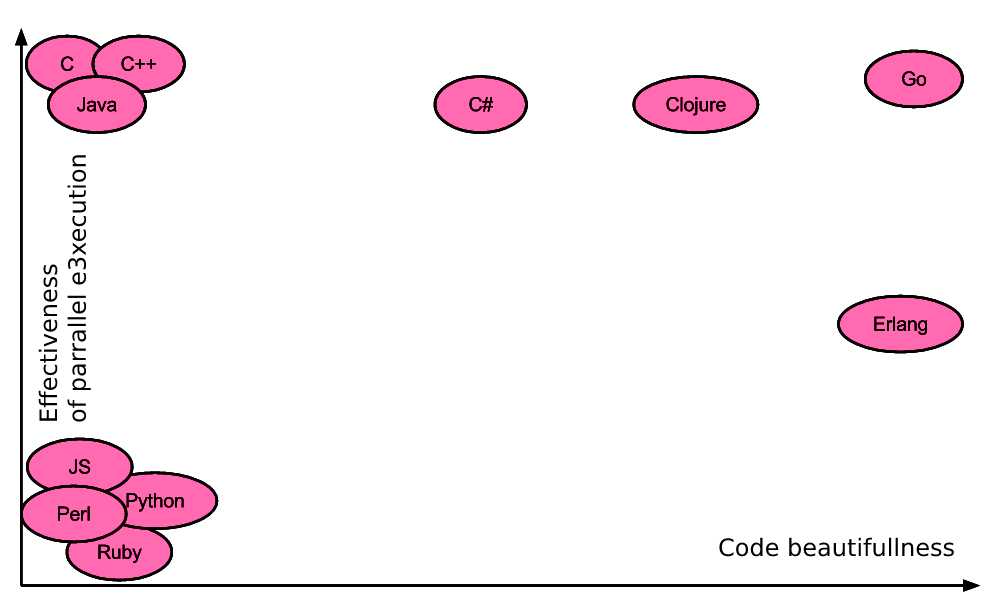
Whereas there are C/C++ languages which do not use VM, which removes one step from the execution loop, thus improving performance. Code is directly compiled from human readable code to binary.
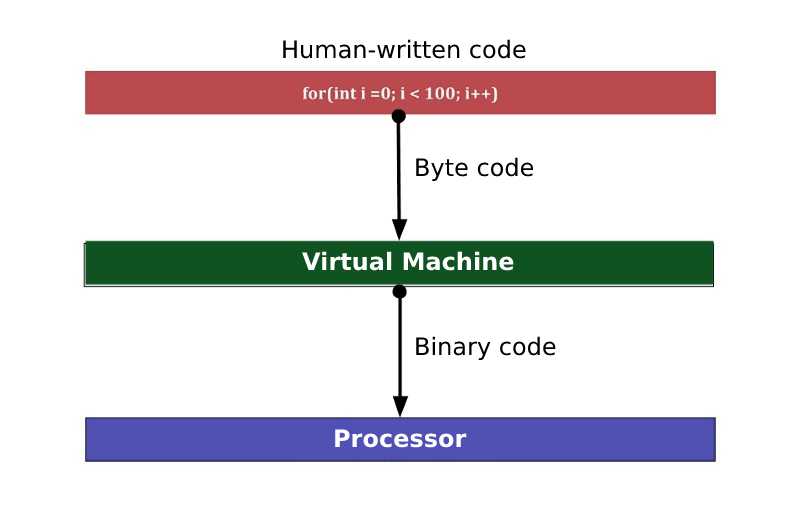
But releasing and allocating a variable in such a language is a big problem. Although most languages handle object allocation and deallocation using rubbish collection or reference counting algorithms.
The Go language brings together the best of everything. Like lower-level languages, Go is compilable. This means that performance is almost as good as in lower-level languages. It also uses a rubbish collector for object selection and removal. More free() and malloc(). Just what you need!
Go code is easy to support
The Go language is devoid of crazy syntax. Unlike other languages, Go has a very clean and tidy syntax.
Go's developers took this into account when creating their language. Since Google has a very large code base, with thousands of developers working on it, it needs to be as clean and easy to understand as possible, and each part of it should have as few side-effects as possible on the rest. Such code is easy to maintain and modify.
Go specifically does not take into account many of the features of modern OOP languages:
- No classes. Everything is broken up into packages. Go works with structures, not classes.
- It doesn't support inheritance. This makes it easier to change code. In languages like Java and Python, if class A inherits class B, and you make changes to the latter, this can cause some unwanted changes within other classes that inherit B. Without inheritance, Go also becomes easy to read: there are no superclasses to study particularly carefully.
- There are no generics.
- No annotations.
- No constructors.
- No exceptions.
The above changes make Golang a different language and Go programming extremely easy. You may not like some of the above points (especially if you are used to working with typical OOP languages).
But that doesn't mean that you can't write your own program in Go. All you need to do is add an extra 2-3 lines of code. But the end result is a much nicer, cleaner and clearer code.
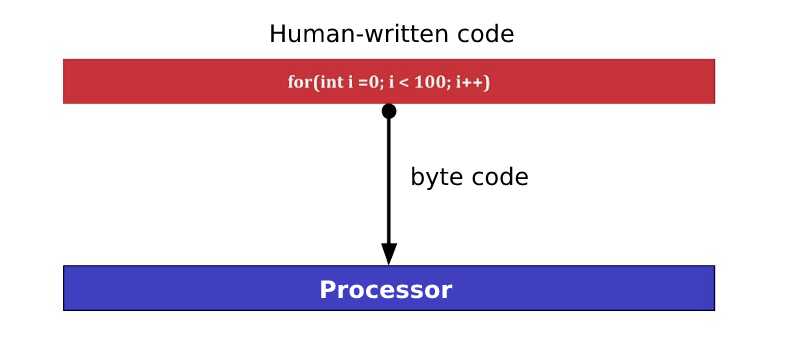
You can see from the graphic that Go is about as efficient as C/C++, while keeping the code syntax as simple as Ruby or Python. It's a better option for people and processors.
Unlike other new languages, such as Swift, Go's syntax is stable. It has remained the same since the first release of version 1.0, which took place in 2012. This makes it backwards compatible.
Golang is supported by Google.
Yes, this is not a direct technical advantage. But Go is built and supported by a successful corporation. Google has one of the largest cloud infrastructures in the world which continues to grow.
The Go programming language was created by Google developers to address their needs in terms of supporting efficiency and scalability. These are the same issues you'll encounter when building your own servers, too.
Additionally, the Go programming language is popular with IBM, Intel, Adobe, Medium and the BBC.
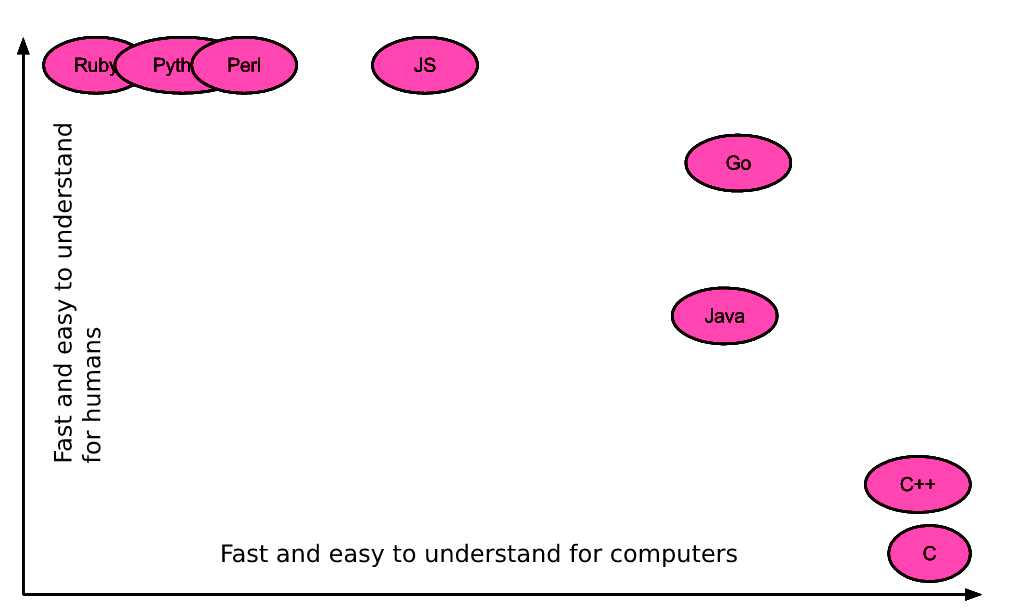
Conclusions
Although the Go language is very different from other object-oriented languages, it's still the same programming language. Go provides:
- high performance, similar to C and C++;
- Super-efficient parallelism handling, similar to Java;
- fun to work with, as with Python and Perl, with the most developer-friendly code possible.
Even if you are not planning to learn Go, you still need to understand that the hardware limit puts a lot of pressure on us developers, as it does not always allow us to write efficient code. A developer needs to understand the hardware and optimize the program in accordance with it.
It is proven that optimized software can run on cheap, slow hardware (such as IOT devices), which has a positive effect on the interaction with the end user.

